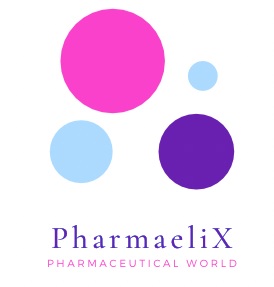Audits and Inspections are so Important for all Industries to improve Quality systems. This will play a major role in the Pharmaceutical industry.
Types of Audits and Inspections
Based on the category, audits are classified into three (3) for user convenience. The details are as below.
- First party audit
- Second party audit
- Third party audit

First party audits or Internal audits
It can be calling as self-inspection also. A first-party audit is usually performed by the company (or a department within the company) itself usually conducted by an internal audit group. However, employees of the department also conduct an assessment similar to a first-party audit. In such an instance, this “audit” is generally referred to as a “self-assessment.”
The purpose of a self-assessment is to monitor and analyze key intradepartmental processes which, if left unattended, have the potential to degenerate and negatively affect product quality, safety, and system integrity.
If performed properly, first-party audits and self-assessments:
- Provide feedback to management that the quality system is both implemented and effective, and;
- Are excellent tools for gauging the continuous improvement effort as well as measuring the return on investment for sustaining that effort.
Second party audits or External audits
Second-party audits are usually performed by the customer upon its suppliers to ascertain whether or not the supplier can meet existing or proposed contractual requirements.
Third party audits
It is an assessment of a quality system conducted by an independent, outside auditor or team of auditors. Example: SA 8000 audit, ISO 9000 audit, etc; whose primary responsibility is to assess a quality system for conformance to that standard and issue a certificate of conformance (upon completion of a successful assessment).
Quality Audits and Inspections
What is a quality audits and what is the purpose of a quality audits?
Is a quality audit similar to a financial audit?
Is an audit the same as surveillance or inspection?
The above questions will be answered below.
The purpose of a quality audit is to assess or examine a product, the process used to produce a particular product or line of products, or the system supporting the product to be produced to determine whether or not the subject of the audit is operating in compliance with governing source documentation such as Standard Operating Procedures, corporate directives, federal and state environmental protection laws, and regulations, etc.
A quality audit distinguishes itself from a financial audit in that the primary objective of the financial audit is to verify the integrity and accuracy of the accounting methods used within the organization. Yet, despite this basic difference, many of the present-day quality audit techniques have their traditional roots in financial audits. Quality audits may use to assess the “System, process, product, and compliance” within the organization.
Quality System Audit
A quality system audit is defined as a “systematic and independent examination used to determine whether quality activities and related results comply with planned arrangements. And whether these arrangements are implemented effectively and are suitable to achieve objectives” (ISO 10011-1 (1990)). Further, it is a “documented activity performed to verify, by examination and evaluation of objective evidence, that applicable elements of the quality system are suitable and have been developed, documented and effectively implemented in accordance with specified requirements” (ANSI/ASQC A3 (1987)).
Audits and Inspections – Process Audit
The process audit has two basic objectives, one is “Appraisal and another is Analysis”.
In the appraisal mode, the auditor looks at whether personnel involved in the production process performing in accordance with Quality Standards or not. Such as the company manufacturing process plans, procedures, work instructions, workmanship standards, etc.
It revolves around verification of the manner. In which: 1) people; 2) material; 3) machines, etc., mesh together to produce a product in compliance with the written procedures and standards.
During this mode process audit is also concerned with the validity and overall reliability of the process itself.
In the analysis mode, the auditor looks at whether the procedures, work instructions, and so forth, used in support of the process(es) being audited” are helpful or detrimental. Thorough or sketchy? Does duplication of effort exist between sub-functions? Are any non-value-added steps apparent? Does the overall process complement the expressed or implied quality objectives of the organization? Like short-term customer satisfaction, long-term repeat business, continued profitability, and growth?
Quality Auditor (GMP Auditor role)
Auditors are very important quality professionals in the regulated Pharma industry. They must have a thorough knowledge of guidelines and systems. They check what works, what does not work, strengths, and weaknesses of standards, codes, procedures, and systems.
Stay tuned here for never-before Pharma articles – Best Quality Assurance in Pharma industry, Good Weighing Methods of Analytical Balance

Trackbacks/Pingbacks